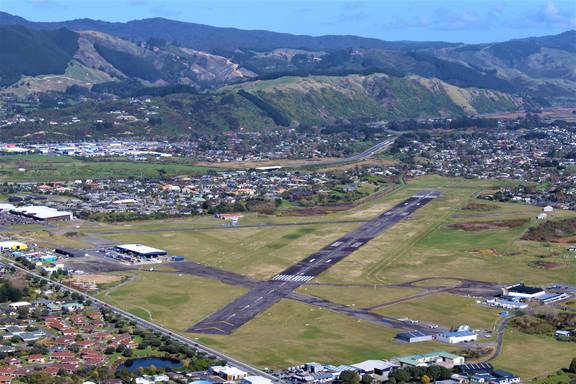By Tim Costley, MP for Otaki
Anyone who has flown between the North and South Islands will know the importance of Paraparaumu airfield from an aviation point of view. I remember heading south across Cook Strait and, despite having the latest met, as we pushed further south the overcast cloud base pushed us lower and lower to the point where the only safe option was to turn back. Paraparaumu was our divert airfield that day and it got us home safely.
I can also think of days where we could push on across the water just far enough to see The Brothers and eventually Rarangi. This was possible because we had enough fuel to turn back and divert to Paraparaumu if required. If we had to hold Whanganui or Feilding, we could never have safely ventured that
far into the haze. Paraparaumu is a life-saver.
Many of you will have seen in the media that the owners of what was once Wellington’s main airport have their own plans: plans without planes, it seems. The thought of this iconic Kiwi airfield chopped up for the profits is appalling; even worse that most of the profits will likely go offshore, never to help or be returned to New Zealand. But the reason the Save Kāpiti Airport group are fighting for the airfield’s future is not just to provide
recreational pilots with a safe haven when crossing the Strait. Aside from all the recreational flying, there are three key reasons to save Paraparaumu.
First, we need it for resilience in crises. Not just for providing support to Wellington after the big one, but for when the Kāpiti Coast is cut-off to the north and south, just like Kaikoura was in 2016. We could only survive with an air-bridge, and life support for an area of this size needs large transport planes like Hercules
flying in everything from milk to toilet paper.
Second, we need it for everyday safety. LifeFlight use it for patient transfer, Rescue Helicopters use it for the same and as a necessary fuel stop. Military and Police use it for training and for staging support to operations. Recreational pilots use it as a safe haven for crossing Cook Strait.
Finally, we need the airport for its commercial air connections to Auckland and the South Island – for business travellers, family holidays, tourists coming into the region. Kāpiti Airport is easier to get to than Wellington, it has better parking, and will soon be the regional hub serving travellers from Levin to Johnsonville. Unless it gets closed.
You might read online that the owners want to sell it because they’re not making enough money. Putting their creative accounting aside, we believe the airport is viable with the commercial rents that come from the surrounding land, and scope to develop more. You may also hear that it is a ‘safety’ decision, especially if the AFIS is removed. Of course we all know that airports like ours operate all around New Zealand: Whanganui and Taupo are two examples of many. Anyone with a PPL can tell you how unattended airfields work and work safely. Whanganui has more traffic than Paraparaumu, Air Chathams fly there too, as does a large training school, along with military and civilian flights. NZPP is not dangerous nor has it passed its use-by date. Paraparaumu has a safe and thriving future, but we need help to fight to protect that.
We’d love to hear how you’ve used Paraparaumu Airport over the years, and why you believe it’s important that it be retained. Please send your stories to info@savekapitiairport.co.nz to help us #SaveKāpitiAirport
This article first appeared in the Autumn 2021 edition of Approach Magazine, the dedicated magazine of AOPA NZ, which is published quarterly.

